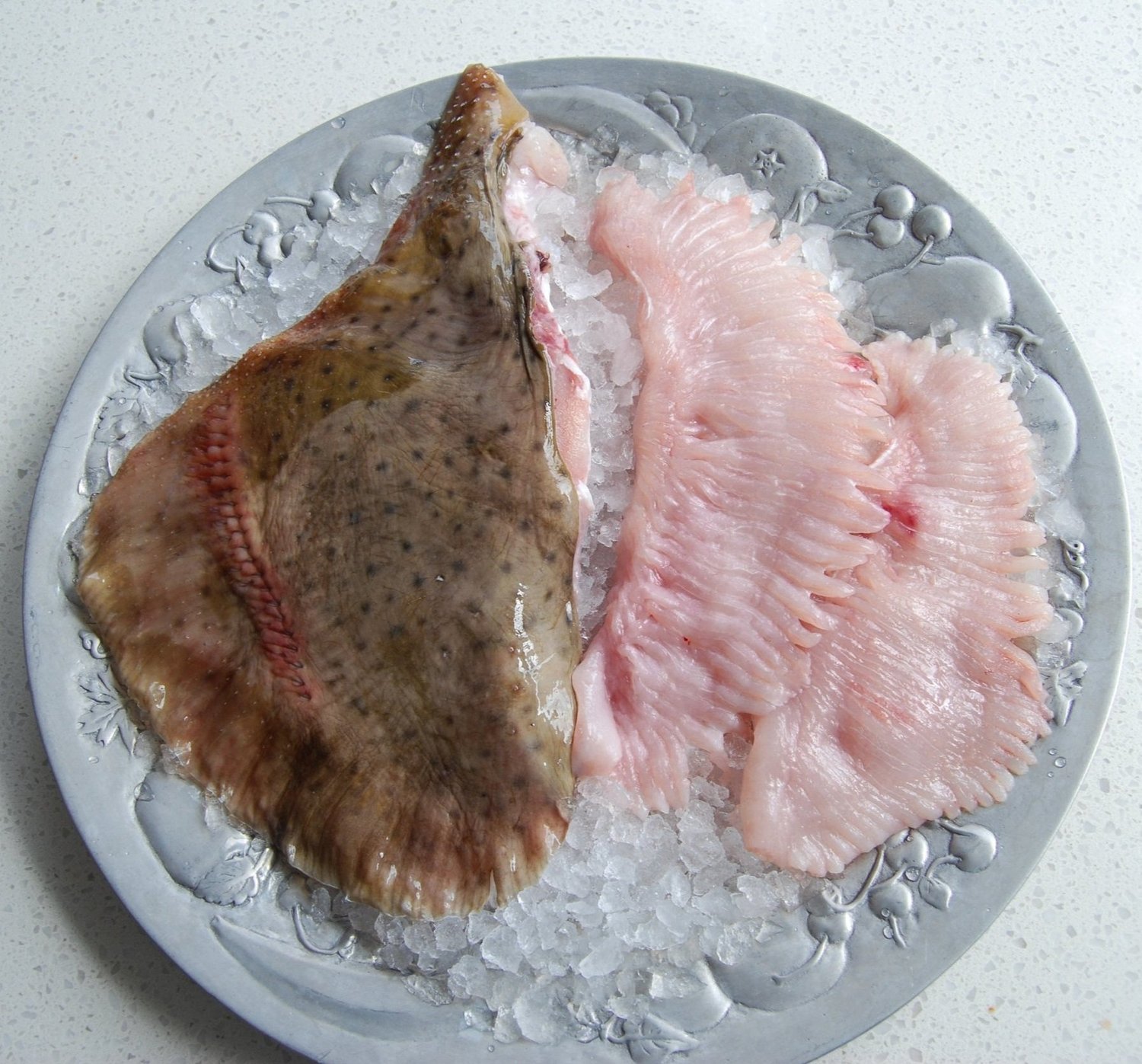Skate fish, also known as skate wing, is a type of flat fish found in oceans around the world. It belongs to the family Rajidae and is closely related to rays. Skate fish has a distinct diamond or rhombus shape and a thin, cartilaginous body. It usually has a light brown or grey color on its skin.
Skate fish is known for its mild and slightly sweet flavor, similar to scallops or crabmeat. The texture is firm and slightly fibrous. It can be prepared in various ways, including baking, grilling, or frying. Skate fish is commonly used in seafood dishes, such as fish and chips, or served as a standalone main course. However, it is important to note that skate fish has relatively high mercury levels and should be consumed in moderation, especially for pregnant women or children.
Know More About: what is skate fish
Skate Fish: Unlocking the Secrets of this Fascinating Species
Introduction:
Skate fish, also known as “skates,” may not be as widely recognized as other popular seafood choices, but this enigmatic species holds a unique place in the ocean’s ecosystem. With their unconventional appearance and interesting behavior, skates captivate the attention of marine enthusiasts and seafood aficionados alike. In this article, we will delve deeper into the world of skate fish, exploring their characteristics, habitat, culinary uses, and conservation efforts.
Appearance and Features:
Skate fish possess an intriguing appearance that sets them apart from other fish. Resembling a combination of a ray and a shark, skates possess a flat diamond-shaped body with wing-like pectoral fins on either side. Their cartilaginous skeleton, lack of scales, and rough skin give them a distinctive feel. Most skates are medium-sized, with lengths ranging from two to four feet, although some larger individuals can reach up to eight feet.
Habitat and Range:
These fascinating creatures thrive in a variety of aquatic environments, from shallow coastal waters to cold ocean beds. Skates are commonly found in the Atlantic and Pacific Oceans, with notable populations discovered along the coasts of North America and Europe. They prefer sandy or muddy substrates to camouflage themselves, and their ability to bury themselves is essential for hunting and avoiding predators.
Behavior and Diet:
Skate fish are primarily bottom-dwellers, spending the majority of their time resting or hunting on the ocean floor. Using their prominent pectoral fins, they gracefully glide through the water, a sight both mesmerizing and graceful. Skates are opportunistic predators, feeding on a diverse diet that includes small fish, crustaceans, mollusks, and invertebrates. Their unique jaw structure allows them to crush hard-shelled prey, ensuring a well-rounded and versatile diet.
Culinary Delights:
Skate fish may not be as well-known or extensively featured in culinary circles compared to other seafood favorites, but its meat is highly regarded for its mild, sweet flavor. Its distinct texture, resembling that of scallops or lobster, has earned it the nickname “the poor man’s scallop.” Due to its popularity, skate fish can be found in various traditional recipes worldwide, such as French skate wing with caper sauce or spicy Goan-style skate curry. Chefs value skate as a versatile ingredient, which adapts beautifully to pan-frying, grilling, or braising methods.
Conservation Efforts:
As with many species in our oceans, skate fish face significant threats from overfishing and habitat degradation. Their slow reproductive rate, coupled with their vulnerability to bycatch, has placed them on the list of species of concern. Several conservation organizations are working diligently to gather vital data on skate populations, implement sustainable fishing practices, and promote responsible seafood choices. Protecting these captivating creatures and their habitats becomes essential in preserving the natural balance of our oceans.
Conclusion:
Skate fish, with their unique appearance, intriguing behavior, and delightful culinary qualities, deserve recognition and appreciation among seafood enthusiasts. By understanding their role in the marine ecosystem, supporting sustainable practices, and embracing their culinary potential, we can ensure the survival of this remarkable species for generations to come. Let us celebrate the extraordinary world of skate fish and continue to make conscious choices that promote their conservation.
Key Takeaways from what is skate fish
Skate fish, also known as ray fish, is a cartilaginous fish found in coastal waters around the world. It has a flat body with diamond-shaped wings and a long tail. Skate fish is a popular seafood choice due to its mild, sweet flavor and tender flesh. It can be prepared in various ways, such as grilling, baking, or frying. However, it is crucial to remove the tough outer skin before cooking. Skate fish is a good source of protein, vitamins, and minerals, including omega-3 fatty acids, which promote heart health and reduce inflammation. Overall, skate fish offers a tasty and nutritious option for seafood enthusiasts.
FAQs on what is skate fish
1. What is skate fish?
Skate fish refers to a type of cartilaginous fish that belongs to the Rajidae family. It is commonly found in both saltwater and freshwater environments.
2. What does skate fish taste like?
Skate fish has a distinct flavor that is often described as slightly sweet and mild. It is commonly compared to the flavor of scallops or crab.
3. How do you cook skate fish?
Skate fish can be cooked in various ways, including baking, grilling, or pan-frying. It is often breaded or seasoned with herbs and spices to enhance its natural taste.
4. Is skate fish healthy to eat?
Yes, skate fish is a good source of lean protein and contains essential nutrients like Omega-3 fatty acids, Vitamin B12, and selenium. It can be a healthy addition to a balanced diet.
5. Can you eat the skin of skate fish?
Yes, the skin of skate fish is edible and can be left on during cooking. However, some people prefer to remove it as it can have a slightly tougher texture.
6. Are there any precautions to take when handling skate fish?
Yes, skate fish contains small thorns or spikes known as “skates” on its wings. Care should be taken to remove them before or after cooking to avoid injury.
7. Can skate fish be used in sushi or sashimi?
Skate fish can be used in sushi or sashimi preparations; however, it is important to ensure the fish is properly cleaned and de-skated before consuming raw.
8. Where can I buy skate fish?
Skate fish can be found in most seafood markets, fishmongers, or grocery stores with a good seafood section. They are often sold as fillets or whole fish.
9. How should skate fish be stored?
Skate fish should be stored in the refrigerator at temperatures below 40°F (4°C). It is best consumed within 1-2 days after purchase for optimal freshness.
10. Are there any sustainable fishing practices for skate fish?
Yes, it is recommended to choose skate fish that has been sustainably sourced to promote responsible fishing practices. Look for certifications or labels indicating sustainable fishing methods.

